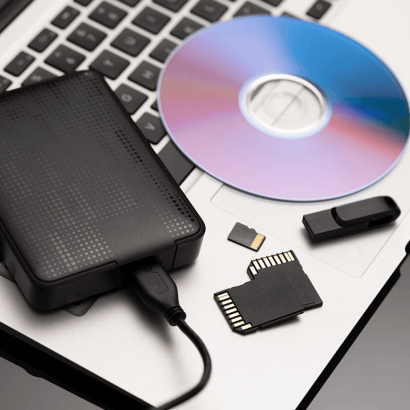Exploring different data storage solutions

In the age of information overload, data storage has become a crucial part ensuring as much information is kept safe and passed onto future generations. It's where we stuff everything from work files to last year's family vacation photos. Today, we take a look at the different types and the things that set them apart from the rest.
1. Hard Disk Drives (HDDs)
HDDs are traditional storage devices that offer large storage capacities at a low cost. They are suitable for storing vast amounts of data like photos, videos, and documents. However, they are slower and less durable than some newer technologies.
2. Solid State Drives (SSDs)
SSDs are faster and more reliable than HDDs because they have no moving parts. They provide quick access and high speeds for booting systems and loading applications. SSDs are ideal for users who need speed and efficiency but come at a higher cost.
3. Flash Drives
Flash drives are portable and easy to use, making them perfect for transferring files between devices. They come in small sizes but can hold a significant amount of data. Flash drives are great for personal use and temporary data transfer.
4. Optical Drives (CDs, DVDs, Blu-ray Discs)
Optical drives use discs to store data and are commonly used for media such as music, movies, and software. They are beneficial for backing up important data and can last a long time if properly cared for.
5. Cloud Storage
Cloud storage allows you to store data on remote servers accessed via the internet. It is excellent for backup, easy sharing, and accessing files from any location. Cloud storage is scalable, meaning you can increase storage space as needed.
6. Network Attached Storage (NAS)
NAS systems are dedicated storage devices connected to a network that allow multiple users and devices to store and access data centrally. They are ideal for businesses or home networks that require shared access to large amounts of data.
7. Hybrid Storage
Hybrid storage combines the speed of SSDs with the capacity of HDDs. It's an excellent option for those who need both performance and storage space without compromising one for the other.
8. Memory Cards
Lastly, Memory cards are used in mobile devices and cameras to expand their storage capabilities. They are compact, easy to use, and come in various storage capacities, making them ideal for portable storage needs.
Each type of storage has its unique benefits such as speed, capacity, portability, or cost; so what do you value most when choosing the right storage solution for your needs? Let us know in the comment section below.

 Blog
Blog
Leave a Comment